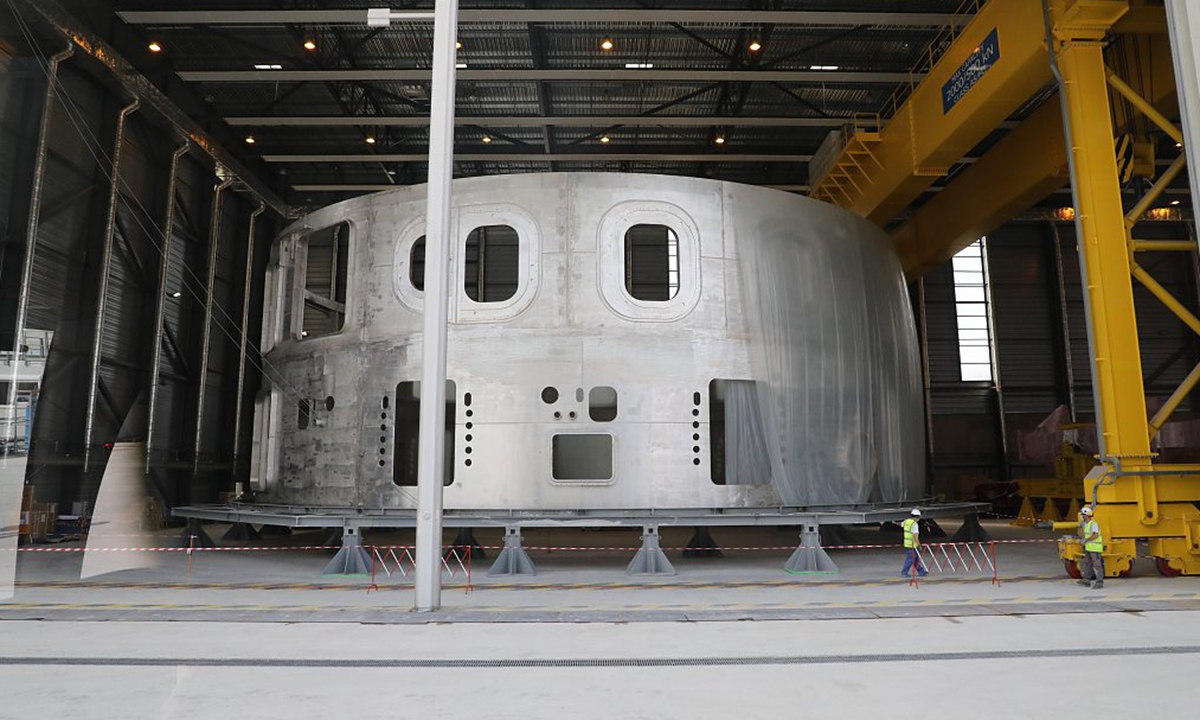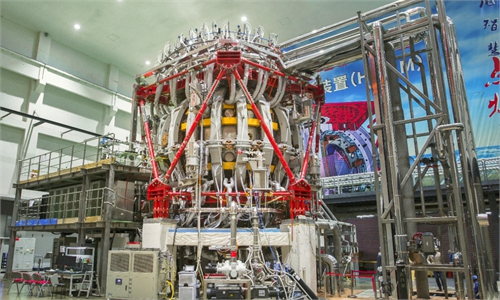Chinese-led team helps finish main engine installation of world’s largest fusion reactor ITER

ITER Photo:VCG
The last main magnetic component of the International Thermonuclear Fusion Experimental Reactor (ITER) Tokamak device, the poloidal field superconducting coil PF5, was successfully installed on Thursday, marking the completion of the final milestone of the first stage of the ITER project mainframe installation.
The milestone creates key conditions for the installation of the next stage of the vacuum chamber, while is also another piece of "hard bone" that the China-French consortium led by China National Nuclear Corporation gnawed at the ITER site in France, according to a report from Science and Technology Daily, the official newspaper of China's Ministry of Science and Technology.
In southern France, 35 nations are collaborating to build the world's largest tokamak, also known as an "artificial sun," a magnetic fusion device that has been designed to prove the feasibility of fusion as a large-scale and carbon-free source of energy based on the same principle that powers the Sun and stars, according to the ITER organization.
China, the European Union, the US, India, Japan, Russia, and South Korea, are now engaged in a 35-year project to build and operate the ITER experimental device and together bring fusion to the point where a demonstration reactor can be designed.
China is responsible for about 9 percent of the project's construction and operation, but has even gone further to help other members.

